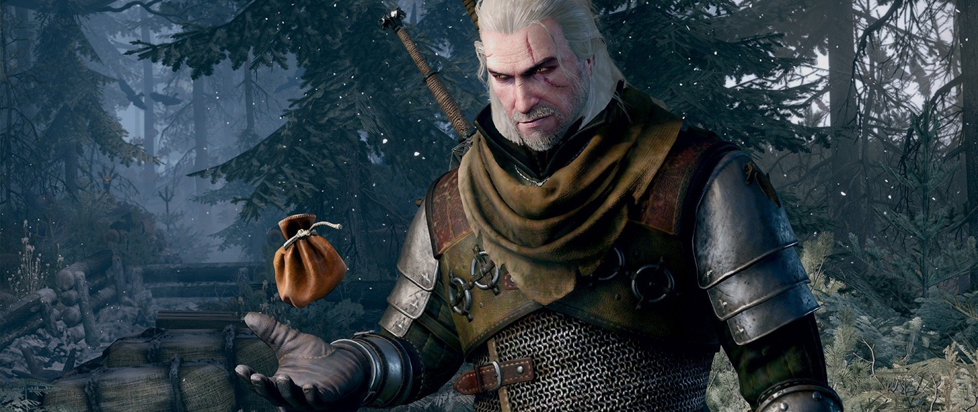
Steamjunk
The Burnt Offering is where Stu Horvath thinks too much in public so he can live a quieter life in private.
———
The following is a reprint from Unwinnable Weekly Issue Thirty-Three. If you enjoy what you read, please consider purchasing the issue or subscribing.
———
There is no one thing about steampunk that fills me with loathing. Rather, it is an overwhelming confluence of things, each outdoing the next.
For those unfamiliar with the term, steampunk is a slipstream subgenre combining elements of fantasy, science fiction and, to a lesser degree, horror and the western. The lone unifying concept of steampunk is that, you guessed it, stream-powered technology is somehow involved.
K.W. Jeter coined the term in the late 1980s when trying to describe the work of Tim Powers (The Anubis Gates), James P. Blaylock (Homunculus) and himself (Morlock Night). All three books, decidedly modern, were knowingly looking back and imitating the style of 19th century speculative fiction by the likes of H.G. Wells and Jules Verne. I’m not sure about Jeter’s use of the word punk, but I do understand the need for a catchy term, at least for the sake of marketing.
The problem is that the catchy term mutated into an infectious catch-all. The more the subgenre’s popularity has grown, the more its proponents burrow into new territory, claiming that everything with a pocket watch and a top hat as steampunk. It is less a subgenre than it is a coppery, neo-Victorian wrapper that adds nothing to the things it encompasses.
The greatest proof of this is the so-called steampunk lifestyle movement, which claims that, by incorporating ideas from other subcultures, they have ascended to become a kind of super-culture. All I see is a morass of derivatives.
Take the fashion. Steampunks aren’t content to just wear Victorian clothing. They have to embellish that clothing with an improbable collection of gauges and goggles and armatures. While these byzantine designs may look impressive, they do absolutely nothing. They merely look cool.
The gear is one of the most identifiable symbols of purpose, of function. Steampunk has subverted that, stripping the gear of purpose and turning it into a bauble, a decoration, toothless. This is anti-utility, the quintessence of form over function.
Have you ever heard the word fremdschämen? It is a German term (the Germans have so many wonderful words) for the feeling of shame you get for something someone else has done, a kind of reflexive embarrassment for someone who, for reasons beyond our comprehension, has not realized that they have embarrassed themselves.
I can think of no better word to describe my experience with steampunk.
———
It is hard for me to reconcile the fact that I enjoy many things claimed by steampunk. I always liked the gnomes in Dragonlance – in a world full of magic, their steam engines were an intriguing contrast. I love nearly every word Powers and Blaylock have written (though neither fetishizes industrialization and notions of empire in the way many modern steampunks implicitly do). There’s more: Spelljammer, Terry Gilliam’s movies, the Victorian themed punk rock of Stiffs Inc. and on and on. And automatons! I adore the idea of clockwork animals and the mechanical Turk.
Calling something steampunk diminishes it and hides its intrinsic merits. When you say something is science fiction, I get flashes of words like space, technology, future. You say horror, I know I am going to be scared. When you stay steampunk, I am pretty sure it is going to involve a dirigible and teatime and some guy in a monocle.
The problem is, all that is just stage dressing. It makes the actual story, the important thing in storytelling, secondary to some grand unified theory of aviator goggles.
Take the lovely game Sunless Sea. It has many elements that one might be inclined to call steampunk: alternate history, a Victorian London, steam-powered ships. And yet, the game isn’t about these things. Rather, they are means to explore ideas of isolation, fear and human fragility.
Compare to The Order 1886. Here, steampunkness is on full display. We have the alternate history, London, plenty of zeppelins, Nikola Tesla, electricity weapons. More than that, we have the titular order of knights, all cut from the same cloth of the English adventurer, some dashing, some mysterious, some gruff, but all with stiff upper lips and no shortage of derring-do. If there is a better archetypal embodiment of steampunk’s majestic yearnings than The Order, I cannot think of it.
Despite being so obviously steampunk, the game’s developers claim it isn’t steampunk at all. “We don’t use that word purely because I think there’s a connotation …that’s already been built into a lot of things out there,” Ready at Dawn co-founder Ru Weerasuriya told Joystiq back in 2014, “I think our world is a lot darker, grittier, dirtier and more real.”
If you carve out all the anachronistic technology and alternate history from The Order, you aren’t left with much, just another cover to cover shooter starring a burly dude who growls a lot. It is steampunk in a way Sunless Sea is not – more completely, down in the core, at the very roots.
Why deny it, unless those roots are rotten? Perhaps The Order isn’t a hollow, whitewashed, imperialistic power fantasy, just the product of one.




